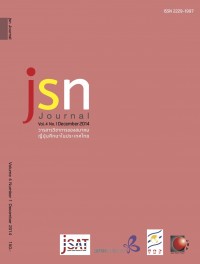Conflict and Democracy in Modern Japan
Main Article Content
Abstract
The process of democratization in Japanese history has witnessed conflicts and vulnerable democracy. This paper focuses on the endurance of democracy in Japan, which has taken around 90 years to become endurable. This risky process can be divided into three phases. The first phase was from the Meiji Restoration to the first Diet election (1868-1890). The second phase was the period of Taisho Democracy. The Taisho era was between 1912 and 1926, but Taisho Democracy should be examined over a longer time span, ranging from 1905 to 1932. The last phase was postwar democracy (1945-1958). The endurance of democracy became a reality in Japan only when the social and political forces in contention finally realized that there would be no means other than accepting democratic rule to solve the differences among themselves.
บทคัดย่อ
กระบวนการเป็นประชาธิปไตยของญี่ปุ่นสมัยใหม่เป็น กระบวนการที่เต็มไปด้วยความขัดแย้งและเสี่ยงต่อความอยู่รอด ของประชาธิปไตย บทความนี้ให้ความสำคัญกับความอยู่รอดของ ประชาธิปไตยในญี่ปุ่นซึ่งใช้เวลาประมาณ 90 กว่าปี ผ่านระยะ เวลาหัวเลี้ยวหัวต่อของความอยู่รอดของประชาธิปไตยใน 3 ระยะ คือ ช่วงที่หนึ่ง สมัยปฏิวัติเมจิจนถึงการเลือกตั้งสภาผู้แทนราษฎร ครั้งแรก (ค.ศ. 1868-1890) ช่วงที่สอง สมัยประชาธิปไตยไทโช (ค.ศ. 1905-1932) และช่วงที่สาม สมัยประชาธิปไตยหลังสงครามโลก (ค.ศ. 1945-1958) กว่าประชาธิปไตยจะสามารถปักหลักในญี่ปุ่น ได้เมื่อพลังทางการเมืองและสังคมที่เผชิญหน้ากันอยู่นั้นตระหนักรู้ว่า ไม่มีเครื่องมือใดที่จะแก้ไขความแตกต่างระหว่างพวกเขาได้นอกจาก วิถีทางแห่งประชาธิปไตย
Article Details
ข้อความและข้อคิดเห็นต่างๆ ในบทความเป็นของผู้เขียนบทความนั้นๆ ไม่ใช่ความเห็นของกองบรรณาธิการหรือของวารสาร jsn Journal


